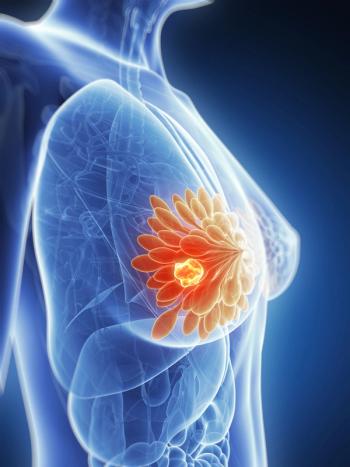
NEOpredict Trial of Nivolumab With or Without Relatlimab Meets Primary End Point of Feasibility in Resectable NSCLC
Results from the phase 2 NEOpredict trial showed that the primary end point of feasibility of treatment in patients with surgical resection of non–small cell lung cancer was reached in those given preoperative nivolumab plus relatlimab.
The phase 2 NEOpredict trial (NCT04205552) met its primary end point of feasibility with preoperative nivolumab (Opdivo) plus or minus relatlimab administered to patients with resectable non–small cell lung cancer, according to a presentation from the
Feasibility, defined as surgery occurring within 43 days of first study medication, was met in all patients in either the nivolumab plus relatlimab or nivolumab alone arms. Secondary end points also supported efficacy of both the combination and single-agent regimens, including objective response rate (10% vs 27%, respectively), complete or major pathological response (27% vs 30%), disease-free survival rate at 12 months (92% vs 91%), overall survival rate at 12 months (92% vs 100%), and the R0 resection rate (100% vs 97%). The median follow-up was 5.68 months.
“Preoperative immune checkpoint inhibitor therapy provides a window for early response assessment and correlative biomarker research on novel agents and combinations with sufficiently established clinical safety profiles,” Martin H. Schuler, MD, director of the Department of Medical Oncology at the Universitat Duisburg Essen in Germany, said during the presentation.
Use of immunotherapy has been successful across settings in NSCLC, but there are still many patients who do not derive benefit from this treatment. Relatlimab, a LAG-3–targeted antibody, may offer additional benefit to patients with lung cancer who are eligible for treatment with immunotherapy.
A total of 60 patients were enrolled to this study and were randomized 1:1 to receive 240 mg of nivolumab with or without 80 mg of relatlimab on days 1 and 15 (n = 30 each) prior to surgical resection. Patients then continued to surgery, followed by standard of care adjuvant therapy.
Patients were eligible for treatment if they had histologically confirmed non–small cell lung cancer that was stage IB, II, or IIIA; curative resectability determined by a multidisciplinary lung cancer board; and sufficient organ function.
Between the monotherapy and combination arms, the patient characteristics were similar. The most common histologic type was adenocarcinoma (13 vs 15, respectively) followed by squamous cell carcinoma (10 vs 9). Patients were most likely to present with a PD-L1 tumor proportion score between 1% to 49% (14 vs 15) and stage IIB disease (11 vs 16).
In this trial, there were no new safety signals observed. Overall, the most common all-grade treatment-related adverse effect was hyperthyroidism which occurred in 17% of patients in the monotherapy arm vs 13% in the combination arm.
Histopathological responses were similar across all statuses. Of note, investigators saw an increase in peripheral blood effector T cells on those with less than 50% of vital tumor cells in resected lung cancer.
Additional studies are underway to further analyze biomarkers in this setting, concluded Schuler.
Reference
Schuler MHH, Cuppens K, Ploenes T,et al. A randomized, multicentric phase II study of preoperative nivolumab plus relatlimab or nivolumab in patients with resectable non-small cell lung cancer (NEOpredict-Lung). Annal Oncol. 2022;33(suppl 7):LBA37. doi:10.1016/annonc/annonc1089
Newsletter
Stay up to date on recent advances in the multidisciplinary approach to cancer.

















































































